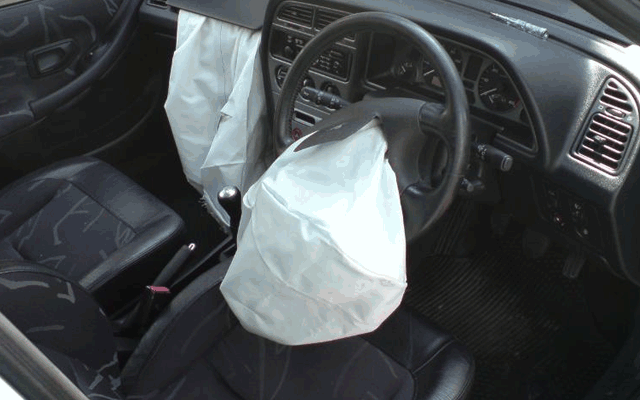DRIVE SAFE: 5 innovations that will make your car even safer

Safety is something many of us take for advantage while driving. Manufacturers have come up with so many safety innovations that have become standard over the years, like airbags and ABS, that have saved countless lives in collisions.
However, with over 190,000 people injured or killed on UK roads in 2014, there is still plenty of work to be done. Here are a few new safety innovations that will make driving even safer for you, and those around you, in the near future.
Vehicle to Vehicle Communication
Vehicle to Vehicle communication technology (or V2V for short) allows vehicles to transmit data to each other in order to prevent accidents, avoid congestion and generally make us all better drivers.
Your vehicle will be able to transmit location, speed and direction data to other vehicles and vice versa, which means you’ll be able to tell where a vehicle is in relation to yours. It then uses this data to help you make safer driving choices; one example from MIT suggests that your car could beep and vibrate to prompt you to slam on the brakes if a collision is imminent.
According to the US National Highway Traffic Safety Administration, V2V technology could prevent half a million accidents and thousands of deaths every year. It’s no wonder that they recently fast-tracked a proposed rule that will make V2V mandatory for vehicles in the future.
V2V is still a couple of years off, with General Motors committing to include the technology in their 2017 Cadillac. Expect to see it more widely by the turn of the decade - we might even have a few V2V vehicles available on car leasing deals by then!
Airbags...under your car

The airbag was one of the greatest safest innovations of the 20th century, but it’s protection is generally limited to the driver and the front passenger.
This is something that Mercedes are hoping to change. In 2009, they unveiled a prototype of an under-car airbag, which deploys when a crash is inevitable. The bag drops out from under the car, raising the vehicle to soften the collision and doubling the stopping power of the vehicle at the same time. Back then, they hoped to use the technology in their 2016 models, so we may get a glimpse of this potentially game-changing safety feature at next year’s car shows.
Alcohol Detection Systems
Most people know better than to drive after a few too many, but some don’t - and their decision to drive can be tragic and fatal.
That’s why the US National Highway Traffic Safety Administration and a whole host of manufacturers, including Volkswagen and Ford, have been working on alcohol detection systems that prevent a driver from even starting their car.
A prototype displayed last month featured a breathalyser fitted to the steering wheel and an engine start button that can detect blood alcohol using infrared. Both of these features then prevent a driver over the limit from starting the vehicle.
This feature probably won’t be in cars for a while, and it certainly won’t be in all cars, but any life it saves will make it completely worth it.
Augmented Reality

The concept of augmented reality for cars has been bandied around for a while, but we finally got a step closer to it this year when BMW and Mini unveiled their AR goggles at Auto Shanghai.
The goggles make the hard parts of your vehicle appear transparent, which would put an end to the dreaded blind spot and make it much easier to make safe driving decisions. The goggles will also be able to provide traffic information, a speedometer and directions.
In the future, we could see AR integrated into windscreens too. These interactive displays would overlay your normal view with real-time traffic updates, route guidance and advice on how to best navigate tricky situations (including potential crashes).
Pedestrian Protection
While there’s no way to stop someone from simply walking out in front of you in an absent-minded haze, various manufacturers have been working on ways to soften collisions and even prevent them entirely.
Perhaps the most famous is Volvo’s City Safety, which is currently on the market. It applies brakes automatically when a crash is inevitable, although it only works at speeds up to 19mph. In the future, the technology should hopefully work at higher speeds too.
Bosch also have their own version of pedestrian protection, which consists of sensors fitted to the front of a car. When a collision is imminent, the sensors will trigger the engine hood to lift slightly and give the poor person colliding with the car a slightly softer landing.
There’s still quite a bit of work to be done, but we’re definitely moving in the right direction.
Share your favourite new car technology, safety-related or not, with us on Facebook and Twitter. And don’t forget to check out our amazing business contract hire deals either!


























































